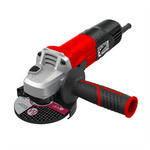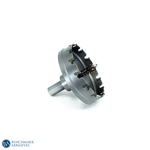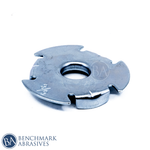
Beginners Guide To Metalworking

This metalworking guide will help you learn everything you need to start working with metals. Starting with, what is metalworking? And what are the different metalworking Processes?
What is Metalworking?
Forming, molding, and shaping metals to make useful tools, objects, tool parts, and structures is known as metalworking.
Forming, cutting, and joining techniques are the most common types of metalworking processes, and these techniques include metal cutting, welding, casting, and molding. Steel, aluminum, gold, silver, bronze, iron, and other ferrous and non-ferrous metals are among the materials used in metalworking.
Types of Metalworking Process
The metalworking process is used to make every object and structure, whether a small decorative item or a large machinery tool. Some metalworking techniques are the same for different materials. The metal you are working with depends on its chemical properties; these may also significantly impact the desired output.
Mainly there are four types of metalworking processes:
- Cutting
- Joining
- Forming
- Casting
#1 Cutting
The cutting process is used to remove excess material from metal using milling, routing, and turning. Plasma cutters are gas-powered torches that remove material and cut holes in metal using argon and hydrogen gas. Cutting is most commonly used by metal fabrication shops, automotive repair, and construction industries.
Types of Metal Cutting Processes
Metals are cut to make objects and tools in the metalworking process. In metalworking, various metal cutting processes are involved. Such as,
- Milling: The milling process removes precise amounts of material from the large workpiece. This process involves using a milling machine that rotates the cutting tool and cuts the workpiece.
- Turning: Turning is a machining process that removes material from the workpiece by linearly rotating the cutting tool while the workpiece is rotating. The turning process can cut the workpiece by depth and width.
- Grinding: The grinding process removes material from the workpiece using abrasives, although this process is used in the final stages of metalworking. Metal grinding tools mainly includes handheld angle grinders, bench grinders, and CNC machines.
- Drilling: Drilling is making holes in metal with the help of a drill press, a portable drill, or a CNC machine. Use a lubricant when drilling; this prevents overheating and extends the drill bit set life; this also avoids chattering and creates a smooth and precise hole.
Read More: Metalworking tools for beginners
#2 Joining
Joining is the metalworking process of fusing two pieces of metal using extreme heat and pressure. Welding and soldering are the two most common types of joining processes. Welding is a metal fabrication process that uses a welding rod to combine ferrous and non-ferrous metals. This process is ideal for large metalworking jobs. Soldering is joining different types of precious metals together using melting solder. This process is ideal for small metalworking jobs.
Types of Joining Process in Manufacturing
The joining process uses heat and pressure to join pieces of metal together. This process is used to combine small objects to form large objects. Soldering is a process of fusing small precious objects, such as jewelry and sculptures, while welding and riveting are useful for large projects such as the manufacturing of something that holds weight.
- Welding: Welding is a metal fabrication process that uses pressure and heat to fuse metals. However, there is a difference between metal fabrication and welding. Some types of welding are performed indoors, while others are performed outdoors.
- Soldering: Soldering is also a metal joining process in which molten solder is used over metals to form a strong electrical bridge.
- Riveting: A rivet is a mechanical fastener made of a smooth, cylindrical shaft with a small head. Rivets are used to join lightweight as well as high-strength metal parts together. They are perfect for supporting shear, tensile loads, and waterproof applications.
#3 Forming
Reshaping and fabricating metal objects without adding or removing any material is known as forming. It is a metalworking process. In this process, heat and pressure are used to shape metals. Forging and bending are two common types of forming processes. The metal is heated in a forge and then hammered to bend it into the desired shape in forging.
Types of Metal Forming Process
Forming is a metalworking process in which a fabricator reshapes metals by heating or cooling them. The forming process you need depends on the metal you're working with, the tools you use, and the output you need.
- Forging: Forging is a traditional metalworking process used to form and shape metals. As we discussed earlier, the metal is heated in a forge and then hammered to bend it into the desired shape in forging.
- Roll forming: In the roll forming process, a long strip of sheet metal is continuously bent through a roll forming mill (at room temperature).
- Rolling: In rolling, metal passes through a rolling mill to reduce thickness and get a uniform shape.
#4 Casting
Metal casting is a traditional metalworking technique used to make sculptures, tools, and jewelry since about 4000 BCE. To make objects, Metalsmiths used to pour molten metals into cavities carved in stone, plaster, sand, and sometimes even bone. Although metal casting is a cheap and time-efficient process, still it cannot fulfil the requirements of today's advanced metal fabrication industries. Lost wax casting and sand casting are the two most common metal casting techniques.
Types of Casting Process
In the metal casting process, solid metal objects are formed by pouring molten metal into a mold, cooling it, and then removing it from the mold. Metal casting saves money and time. Lost wax casting, die casting and sand casting are all common processes for metal casting.
- Lost wax casting: Molten metal is poured into a wax mold in lost wax casting. In this process, the specified size is obtained on the melting of the wax.
- Die casting: In die casting, the molten metal is poured into a mold to obtain the desired shape with the help of high pressure. It is an automatic and fast process.
- Sand casting: Sand casting involves using sand as a mold material. The mold is made by mixing sand and a bonding agent.
This article was about a beginner's guide to metalworking.
Also Read:



































































